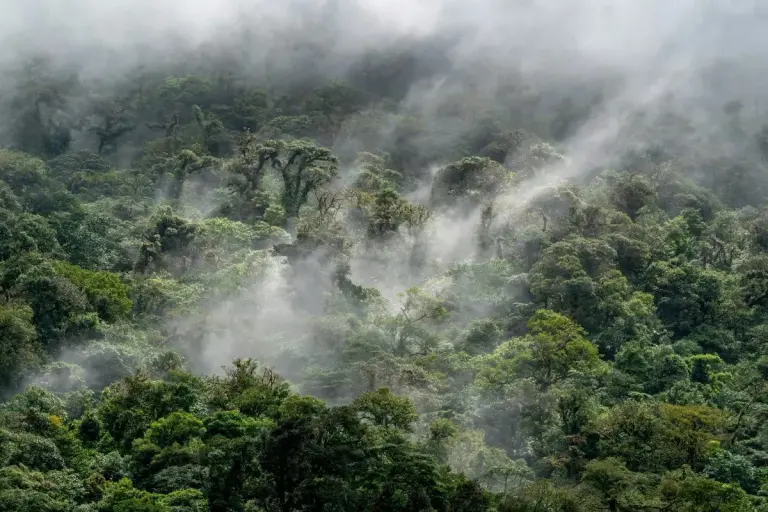The Panamanian Ministry of Environment is reviewing a landmark proposal to establish the Sierra Llorona National Park. This new protected area would safeguard at least 15,000 hectares of forest in the Colon mountain range. The initiative emerged from a major redesign of the Caribbean Corridor highway project after environmental concerns halted its original construction.
Environment Minister Juan Carlos Navarro explained that he found the project’s environmental assessment was improperly fragmented upon taking office. This discovery prompted the immediate suspension of all work. A subsequent dialogue process with local communities and stakeholders produced a new plan. The agreement transforms the infrastructure project into Panama’s first ecological highway, paired with the creation of the new national park.
“Once the studies are complete, we will move forward to establish the Sierra Llorona National Park, an area with biodiversity similar to Darien and contiguous to the Chagres National Park, which is strategic because it generates 40 percent of the water for the Panama Canal,” [Translated from Spanish] Navarro emphasized.
The proposed park zone, located in the high part of the mountain range, hosts unique species and forms part of a critical region for watershed conservation. The project has already completed its public consultation phase. It now enters the final review stage for its comprehensive Environmental Impact Assessment.
Highway Redesign Spurs Conservation Opportunity
The broader Caribbean Corridor project represents a $91.6 million undertaking managed by the Ministry of Public Works. Officials divided the road initiative into two distinct stages to better manage its environmental footprint. The first stage runs from santa rita to Sierra Llorona and is currently undergoing the Category III Environmental Impact Assessment process. Stage two, connecting Sierra Llorona to Maria Chiquita, remains under construction with new environmental parameters.
A public forum for the first stage’s environmental assessment was held on October 29 in Sabanitas, Colon. The event aimed to present technical, environmental, and social details of the redesigned Caribbean Corridor to community members. This forum marked a critical step in the project’s renewed approval process.
The proposal to convert the Sierra Llorona reserve into a formal National Park will function as an independent environmental project for the Ministry of Environment. It remains intrinsically linked to the highway’s first stage, which must adhere to specific environmental standards. These protective measures include constructing arboreal and underground wildlife crossings, implementing controlled speed limits, establishing access gates, and executing environmental remediation and monitoring throughout construction.
A Biodiversity Hotspot Gains Formal Protection
The Sierra Llorona reserve contains an astonishing diversity of species that will benefit from national park status. Biologists have documented the presence of tapirs, white-lipped peccaries, Central American spider monkeys, jaguars, pumas, and Central American agoutis within its boundaries. This concentration of fauna, including several endangered species, makes the area a conservation priority for the nation.
For biologist Guido Berguido, director of the Adopt a Forest Panama Association, this initiative represents what he calls a historic step. He detailed that the park proposal results from years of opposition to the previous government’s Caribbean Corridor project. That earlier plan sought to connect Maria Chiquita with Quebrada Ancha despite multiple irregularities in its environmental assessment and approval process.
“Sierra Llorona harbors one of the largest concentrations of biodiversity in the country, with endangered species like jaguars, pumas, tapirs, frogs, and an enormous variety of birds,” [Translated from Spanish] Berguido stated.
Legal actions pursued by conservation groups eventually led the Supreme Court of Justice to order a provisional suspension of the original works. This judicial intervention temporarily halted the project’s advance, creating the opportunity for the current redesigned approach. The biologist emphasized that the region’s ecological significance extends beyond its charismatic mammal species to include numerous amphibians and birds found nowhere else.
Broader Environmental Strategy and International Funding
The creation of Sierra Llorona National Park fits within a broader strategy to strengthen Panama’s network of protected areas. Minister Navarro indicated the government wants to position Panama as a regional conservation leader. Beyond Sierra Llorona, officials are pursuing other environmental efforts including a pending update to the boundaries of La Amistad International Park and identifying new conservation zones in Darien.
In these areas, the government might acquire land or possessory rights to protect critical watersheds and ecosystems. This expanded vision for conservation aligns with international biodiversity commitments Panama has made in recent years. The minister specifically noted the initiative aims to attract international financing to support these ambitious conservation goals.
Panama recently received a $3 million donation from Rainforest Trust directed to the Panama Fund for Protected Area Conservation. These resources will help finance the creation of new protected areas and update existing boundaries. Navarro confirmed the funds would be allocated to expand protected area coverage and perform technical updates to existing limits, ensuring sustainable management and protection for threatened species.
The formal proposal for creating Sierra Llorona National Park must still be presented to the Executive Branch for final approval. This submission will include the completed environmental impact assessments and documentation from the public consultation process. The park’s establishment would significantly contribute to Panama’s efforts to preserve its natural heritage while developing responsible infrastructure. It represents a evolving approach to development that seeks balance between connectivity and conservation, potentially setting a new standard for future projects throughout Central America and beyond.



